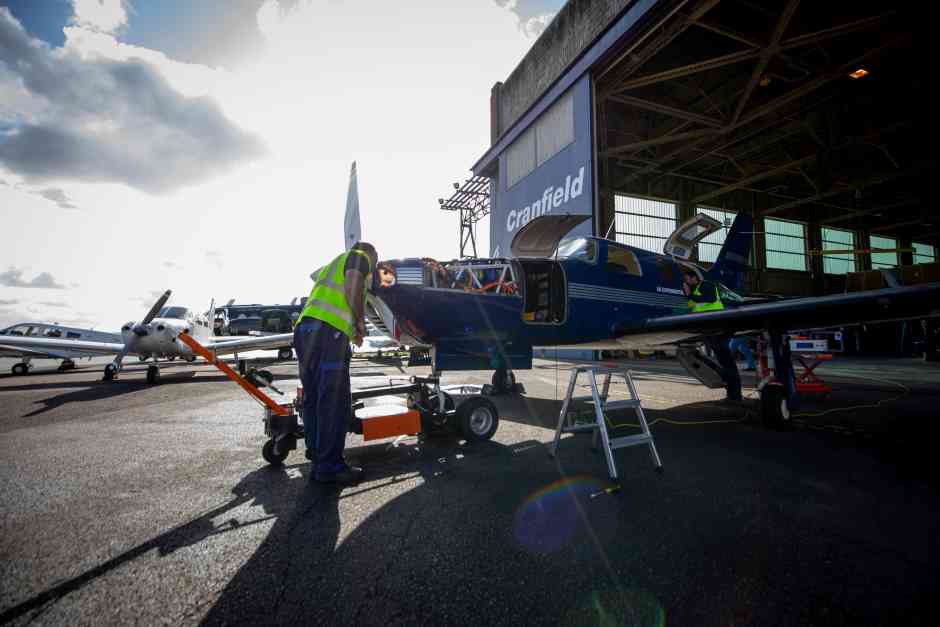Electrification is seen as a natural solution - the way to meet booming global demand for aviation while delivering against zero carbon targets. In spite of the cataclysm of Covid-19 for the industry, the push for the electrification by governments and manufacturers goes on. Mass disruption is seen as an opportunity for introducing exactly these kinds of fundamental, systemic changes for a future of sustainability.
The shift to electric and more-electric aircraft (MEA), however, is dependent on something other than strategy and investment. Where are the reliable power electronics, the semiconductor devices and converter modules that are the actual basis of an electrification revolution?

With the increasingly inherent integration of power electronics in MEA especially, power distribution (consisting of power rectifiers, converters, etc.), propulsion, and actuation systems (comprising electromechanical actuators for landing gear, de-icing systems), there is no room for compromise on the operational as well as functional performance of switches and discrete components that form vital power control and convert topologies.
There are significant challenges hovering over each of the segments of the power electronics industry, including designers, original equipment manufacturers (OEMs), and end-users in particular.
For example, the issue of growing functional complexity, the increased population of components and intricate control algorithms that include existing electronic systems and software architectures.
New applications in aviation, typically operating under severe environments and extended hours, tend to pose cost constraints and more stringent reliability requirements besides ensuring safety compliance. Similarly, in this industry context, unknown failure mechanisms and thermal issues can be exaggerated with the continual increase of power density in converters and enhanced integration of power electronic systems. There are uncertainties relating to the reliability performance of new Wide-Band Gap (WBG) materials and packaging technologies, including SiC (Silicon Carbide), GaN (Gallium Nitride), and HEMTs (High Electron Mobility Transistors).
The business situation is also a challenge. Shorter ‘time to market’ cycles and soaring financial pressures are resulting in time and cost constraints for reliability assessments and the validation of the robustness of power devices.
Perhaps most seriously of all, the existing testing systems aren’t robust. Prognostics and Health Management (PHM) of power electronics, both at the device and systems’ level, fall short of techniques and methods that could provide efficacious through-life management and optimal predictive maintenance. Mission profiles for critical applications are not represented truly in qualification and lab tests.
There is a critical need for a standardised and reliable testing environment for OEMs and airlines themselves to rely on. There are several stringent power device post-manufacturing reliability and qualification tests (such as electrical, environmental, and mechanical stress tests) undertaken by manufacturers to assure their field-time reliability. And these are also mostly only carried out under single environmental conditions, with test setups, rigs, and systems designed accordingly.
What’s needed instead is a ‘highly representative’ test environment. One that is nearly an exact replication of a real manufacturing/field environment, of physical and electrical operating conditions as well as the hardware and software configurations involved. Only in this way will it be possible to have a reliable platform for identifying defects and providing the kinds of cycles of improvement necessary for electrification to prove its potential.
MORE ON SUSTAINABLE AVIATION
GKN heads up sustainable flight programme
Researchers at Cranfield’s IVHM (Integrated Vehicle Health Management) Centre is working on PERTS (Power Electronics Reliability Testing System) as a solution to the problem, as well as expanding understanding of the physics of failure associated with state-of-the-art power semiconductor devices in our new world of electrification. This includes a new ‘life-time failure prediction’ (LFP) simulation approach. Project researchers are looking at making accurate models of silicon–metal layers, semiconductor packaging, printed circuit boards (PCBs) and assemblies to predict solder fatigue failures due to thermal, mechanical and manufacturing conditions. In this way, it’s possible to make fast and accurate life predictions for power electronics at the system, board and component level in early design stages.
Other work is addressing the need for a highly-accurate prognostics and health management regime, using enhanced real-time monitoring of dynamic electrical and physical parameters, such as on-state voltage (collector-emitter), resistance (drain to source), current (collector-emitter), and junction temperature under mission-profile conditions to assess stresses involved.
The major business and operational changes required for electrification will all be founded on confidence in the technology - and that won’t happen without rock-solid testing and new understanding of the complex challenges presented by power electronics. The right testing and early design regimes will mean improvements in safety, flight hours and landings, component removals and failures, no fault found, as well as the small matter of securing the future sustainability of air travel.
Dr. Suresh Perinpanayagam, Senior Lecturer in Intelligent Systems, Cranfield University, www.cranfield.ac.uk




Glasgow trial explores AR cues for autonomous road safety
They've ploughed into a few vulnerable road users in the past. Making that less likely will make it spectacularly easy to stop the traffic for...